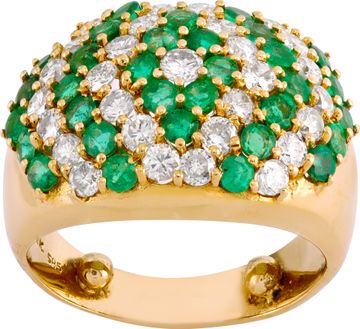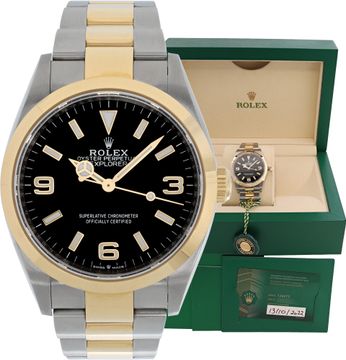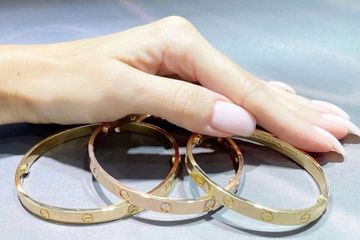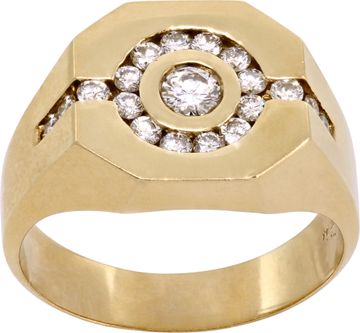What is the Calibre de Cartier Watch?
No one can deny that Cartier has had a long history of making incredibly designed luxury watches that people love to wear. From the classic Tank to and pioneering Santos to the glamourous Panthere and curvy Ballon Bleu, the Cartier catalog is full of iconic watch designs. However, if there was one criticism that watch enthusiasts had for Cartier, it was the Maison lacked in-house made movements and depended too much on base movements from other companies. So, by the end of the 2000s, Cartier began shifting focus to in-house made movements. Cartier-made calibers first appeared in some select high horology pieces then by 2010, the company introduced the aptly-named Calibre de Cartier collection powered by in-house movements.

Available in a variety of different models, sizes, materials, and colorways, the Calibre de Cartier is a diverse watch collection where as much attention is paid to the internal mechanics as to the external design. Read on to learn about the history, evolution, and assortment of the Calibre de Cartier collection.
The Back Story of Cartier’s In-House Movements
In 2008, Cartier unveiled the Ballon Bleu Flying Tourbillon–the first Cartier watch to have a Geneva Seal. In the watchmaking world, the prestigious Geneva Seal (also known as the Poinçon de Genève) is a mark of excellence. It signifies that the entire watch was not only made in Geneva but that it passes strict standards of quality, decoration, performance, and finishes.

Prior to 2008, Cartier had no history of making manufacture movements, let alone watches with a Geneva Seal. So the introduction of the Ballon Bleu Flying Tourbillon powered by the 9452 MC caliber was Cartier proudly demonstrating that it was ready to start equipping some of their watches with in-house movements.
However, the Ballon Bleu Flying Tourbillon belongs to the haute horology genre, targeted to a select few. Therefore, Cartier set out to make in-house watches that could be enjoyed by a much wider audience. And it is was the Calibre de Cartier collection that kicked things off.
The In-House Cartier 1904 MC Movement
The first in-house automatic movement made by Cartier for the Calibre collection was the 1904-PS MC caliber, where “MC” stands for “Manufacture Cartier” and “PS” represents “petite secondes” or running seconds. The self-winding 1904-PS MC movement beats at a frequency of 28,800 beats per hour, offers a 48-hour power reserve, and provides the center hour and minute hands, a running seconds subdial, and a date window.

Another version of this in-house movement is the 1904-CH MC, where “CH” stands for “chronograph.” The 1904-CH MC is an automatic column-wheel operated chronograph movement with small seconds and date indicators.
The First Calibre De Cartier Watches
When the Calibre de Cartier made its debut in 2010, the watches sported 42mm cases and leather straps. The style of the Calibre de Cartier watch case is sporty thanks to the generous case size, prominent curved lugs, and smooth bezel. Yet, these are unmistakably Cartier watches, complete with signature design traits like the sword-shaped hands, railroad minute track, Roman numeral hour markers, and the blue synthetic spinel cabochon set into the faceted winding crown. For an interesting design touch, Cartier uses a mix of Roman numerals for the upper portion of the dial and baton hour markers on the bottom half.

The dial of the Calibre de Cartier 42 watches are clear and legible, with the hour and minute hands at center, a running seconds subdial at 6 o’clock, and an expanded date window at 3 o’clock. Along with the sapphire crystal protecting the dial, the Calibre de Cartier watches also have a sapphire crystal window on the caseback for a view of the in-house movement inside.

In true Cartier form, the then-new Calibre watches were made in an assortment of metals. First, there are the stainless steel Calibre de Cartier watches with leather straps with a black dial (W7100041) or a silver dial (W7100037). Then, there are the two-tone steel and pink gold Calibre de Cartier models with leather straps available with either a silver dial (W7100039) or a chocolate brown dial (W7100051). Finally, there are also the pink gold Calibre de Cartier watches with leather straps with either a silver dial (W7100009) or a chocolate brown dial (W7100007).
Calibre De Cartier Watches with Bracelets
The following year, in 2011, Cartier rounded out the Calibre collection with watches fitted with metal bracelets. The Calibre De Cartier watches with matching metal bracelets were even sportier in style than their leather strap counterparts–not to mention heftier on the wrist. Everything else remained the same from the 42mm cases to the in-house automatic movements.

Yet again, Cartier offered plenty of metal and dial choices. There are the full stainless steel Calibre de Cartier watches with either a silver dial (W7100015) or a black dial (W7100016). Plus, there are also the two-tone steel and pink gold Calibre de Cartier watches with a silver dial (W7100036) or a chocolate brown dial (W7100040).

Lastly, for ultra-lavish versions, Cartier also offers the full pink gold Calibre watches with the choice of a silver dial (W7100018) or a chocolate brown dial (W7100040).
Calibre de Cartier Chronograph
In 2012, Cartier rounded out the Calibre collection with chronograph models. The Calibre de Cartier Chronograph versions maintain the same 42mm case size but with the addition of two elongated chronograph pushers flanking the winding crown.

Naturally, Cartier had to modify the layout of the dial to accommodate the chronograph complication. The dial of the Cartier Calibre chronograph is home to two subdials at 3 and 9 o’clock (30 minute counter and 12-hour counter) while the expanded date window is now at 6 o’clock. The chronograph dials retain the sword-shape hands and mix of Roman numerals and baton hour markers characteristic of the collection. However, the bezels now feature a tachymeter scale to use in conjunction with the central chronograph hand.

Similar to the time and date Caliber models, Cartier also makes several different versions of the Caliber Chronograph editions. The stainless steel Calibre de Cartier Chronographs are available with a leather strap and silver dial (W7100046), leather strap and black dial (W7100060), steel bracelet and silver dial (W7100045), and steel bracelet and black dial (W7100061). On the other hand, the two-tone Calibre Chronograph models are only available with silver dials but with a choice of a matching two-tone metal bracelet (W7100042) or a leather strap (W7100043). Likewise, the pink gold Cartier Calibre Chronograph models feature silver dials with a choice of a matching pink gold bracelet (W7100047) or a leather strap (W7100044).
Calibre de Cartier Diver
In 2013, Cartier introduced the Calibre Diver collection of dive watches, all of which adhere to the strict standards of ISO 6425. At first glance, the Calibre Diver watches look quite similar to the time/date Caliber models, yet closer inspection reveals details integral to a modern dive watch.

Sitting on top of the 42mm case of the Calibre de Cartier Diver watch is a unidirectional rotating ceramic bezel to permit divers to time immersion times. Furthermore, these dive watches boast a 300-meter water-resistance rating and feature plenty of SuperLuminova luminescence on the dial for optimal legibility underwater.
As its flagship modern dive watch range, Cartier ensured that the Calibre de Cartier Diver offered plenty of choice in the case metal, strap material, and dial color department. There are stainless steel Calibre de Cartier Diver models with blue dials, blue bezels, and blue rubber straps (WSCA0011), or black dial/bezel versions with either black rubber straps (W7100056) or steel bracelet (W7100057).

There are also two-tone steel and pink gold Calibre de Cartier Diver watches in blue with a rubber strap (W2CA0009), along with black versions with a rubber strap (W7100055) or a two-tone bracelet (W7100054). The pink gold Calibre de Cartier Diver watches are also available in blue with a rubber strap (WGCA0010) or in black with a rubber strap (W7100052). Finally, there are also the Calibre de Cartier Diver in black carbon (WSCA0006) and in black carbon and pink gold (W2CA0004).
Calibre de Cartier 38
In 2015, Cartier unveiled the Calibre de Cartier 38 models as a smaller alternative to the Calibre 42 models. In addition to the smaller case size, the Calibre 38 watches also include a modified dial layout with a traditional single-numeral date window at 3 o’clock and blue sword-shaped hands. Moreover, rather than a mix of indexes, all the hour markers are Roman numerals.
Similar to the larger Calibre watches, the 38mm editions are available in stainless steel (WSCA0003), two-tone pink gold and steel (W2CA0002), and pink gold (WGCA0003). However, unlike the Calibre de Cartier 42, there are also diamond set Calibre 38 references including a diamond-set bezel model (WF100013) and a full diamond pave dial version (WF100015).
The Calibre, A First for Cartier

As the first Cartier watch collection powered by an automatic manufacture movement, it’s clear that the Calibre de Cartier watch is an important model in the brand’s history. With an appealing mix of sporty looks, characteristic Cartier design flair, and an in-house movement, there is so much to love about the Calibre de Cartier collection.
The Best Rose Gold Watches for Men Right Now
NEXT ARTICLE
Omega Speedmaster Broad Arrow 1957 & Speedmaster ’57






